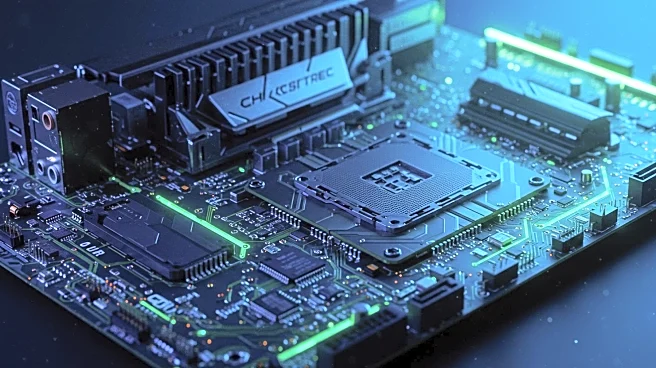What's Happening?
Nvidia Corporation has instructed its suppliers, including Samsung Electronics and Amkor Technology, to suspend production of its H20 AI chip. This decision follows a directive from Beijing urging local companies to avoid using the chip, citing potential security risks. The H20 chip was designed to maintain Nvidia's market presence in China under strict U.S. export controls. Despite recent U.S. approval for Nvidia and AMD to resume sales of lower-end AI chips to China, the companies face challenges as Chinese customers are being pressured to purchase domestic alternatives. The Chinese government has expressed concerns over the H20 chip's features, such as tracking and remote shutdown capabilities, which they consider security threats.
Why It's Important?
This development highlights the growing tension between the U.S. and China in the semiconductor industry. As China aims for self-sufficiency in chip production, the market share of American suppliers like Nvidia and AMD is expected to decline significantly. This shift could impact the global semiconductor supply chain and affect U.S. companies' revenues. The pressure on Chinese companies to use domestic chips could accelerate China's technological advancements, potentially reducing its reliance on foreign technology. This situation underscores the geopolitical complexities in the tech industry, where national security concerns and economic interests intersect.
What's Next?
Nvidia and other U.S. tech companies may need to reassess their strategies in China, considering the increasing push for domestic chip production. The U.S. government might also need to evaluate its export control policies to balance national security with economic interests. Meanwhile, Chinese tech giants like Huawei are likely to continue developing their AI chip capabilities, which could further alter the competitive landscape. Stakeholders in the semiconductor industry will be closely monitoring these developments, as they could have significant implications for global tech supply chains and innovation.

